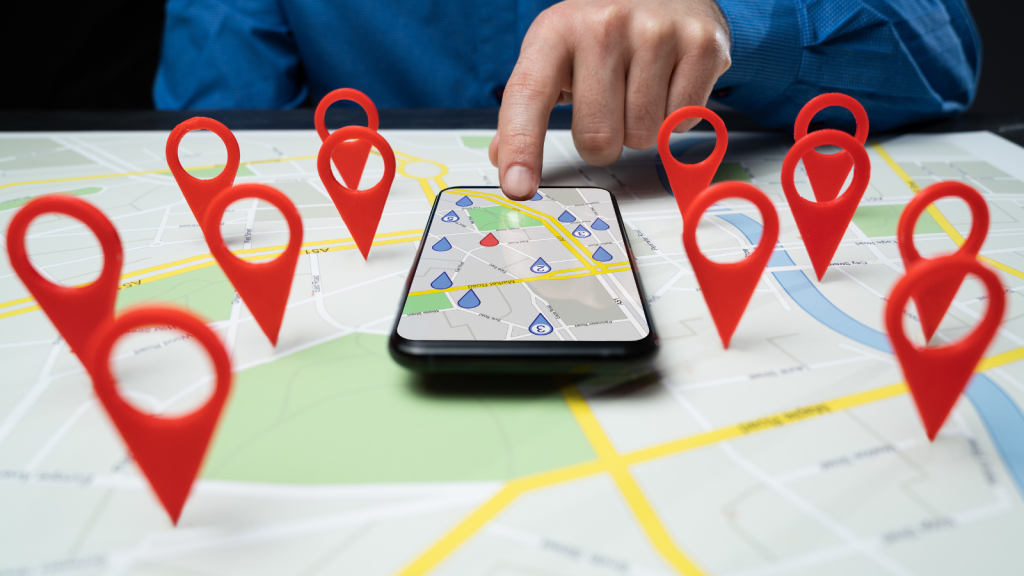Imagine you’re new in town and craving a great cup of coffee. You pull out your phone, type “best coffee shop near me” into Google Maps, and within seconds, a list of businesses pops up. But why do certain cafes appear at the top while others are buried below? The answer lies in optimization.
If you’re a business owner, appearing at the top of Google Maps search results can be a game-changer. Let’s dive into the untold strategies to optimize your business for better visibility and harness the power of NLP (Natural Language Processing) for maximum exposure.
The Power of Google Maps in Local Business
Picture this: Jason, a passionate baker, opens a quaint little bakery in a busy neighborhood. Despite having the best pastries in town, he notices that foot traffic is slow. After researching, he realizes his bakery isn’t ranking well on Google Maps. A few tweaks later—adding optimized descriptions, encouraging reviews, and fixing inconsistencies—his business skyrockets in visibility. More people start finding him, and soon, he’s swamped with orders.
What changed? He optimized for Google Maps.
The Secrets to Google Maps Optimization
1. Claim & Verify Your Google Business Profile
Before anything else, ensure that you’ve claimed and verified your Google Business Profile (GBP). Without verification, you won’t show up in local searches properly.
- Visit Google Business Profile
- Claim your business
- Complete verification (usually via mail, phone, or email)
Once verified, you unlock the ability to optimize your listing fully.
2. Use NLP-Optimized Business Descriptions
Google’s algorithms understand intent through NLP. That means stuffing keywords isn’t enough—you need a naturally flowing, informative business description.
Instead of: ❌ “Best pizza restaurant New York cheap price Italian food delicious.”
Try: ✅ “Craving authentic Italian pizza in New York? Our family-owned pizzeria serves freshly made, wood-fired pizzas at unbeatable prices.”
By writing in a conversational yet informative tone, you improve your chances of ranking higher.
3. Choose the Right Business Categories & Attributes
Google allows you to select primary and secondary categories. Be specific. If you run a pet grooming salon, don’t just select “Pet Services”—choose “Dog Grooming Service” or “Cat Grooming.”
Bonus Tip: Use attributes like “Outdoor Seating,” “Free Wi-Fi,” or “Women-Owned” to stand out.
4. Consistent NAP (Name, Address, Phone Number) Across the Web
Imagine Sarah searching for “best yoga studio near me.” She finds two listings for the same business—one with an old address and another with a new one. Confused, she moves on to the next search result.
Inconsistencies in your business information can hurt rankings. Make sure your NAP details match exactly across:
- Your website
- Social media
- Online directories (Yelp, TripAdvisor, etc.)
5. Encourage Reviews (And Respond to Them!)
Positive reviews are a powerful ranking factor. But did you know that responding to reviews also impacts visibility?
Here’s how NLP helps:
- When customers mention keywords like “best brunch in Chicago,” Google picks up on those terms.
- Engaging with reviews signals to Google that your business is active and trustworthy.
Pro Tip: If you get a negative review, don’t ignore it. Acknowledge, apologize if necessary, and offer a resolution.
6. Geo-Tag Photos & Upload Regularly
Photos help engagement, but geo-tagged photos work even better. When you upload images with location data, Google understands your physical presence better.
Bonus Hack: Upload images at least twice a month to show activity.
7. Utilize Google Posts & Q&A
Think of Google Posts like mini social media updates directly on your listing. Share:
- Announcements
- Promotions
- Events
For the Q&A section, pre-load common questions and answer them. It improves engagement and helps potential customers.
8. Embed Google Maps on Your Website
Embedding your Google Maps location on your site reinforces your business’s legitimacy. It signals relevance and strengthens your local SEO presence.
The NLP Advantage: Maximizing Exposure
Google’s NLP-powered search understands intent better than ever. Here’s how to leverage it:
- Use natural, conversational language in descriptions and replies.
- Encourage long-tail keyword mentions in reviews (e.g., “I found the best seafood restaurant in Miami!”).
- Optimize for voice search queries like “Where’s the best sushi place near me?”
Final Thoughts
Your business’s Google Maps ranking isn’t just about location—it’s about optimization. By implementing these untold strategies, you increase your chances of reaching more customers, getting more foot traffic, and ultimately growing your business.
So, is your business optimized for Google Maps? If not, it’s time to start!

